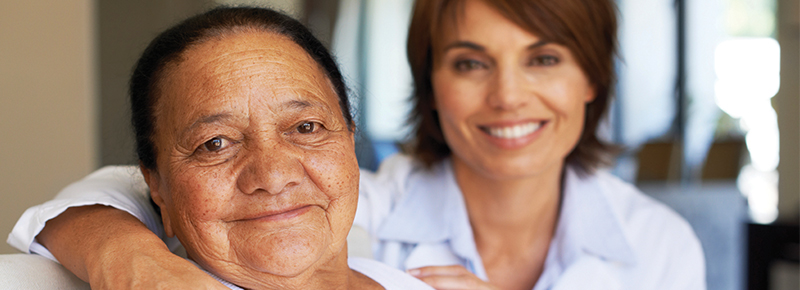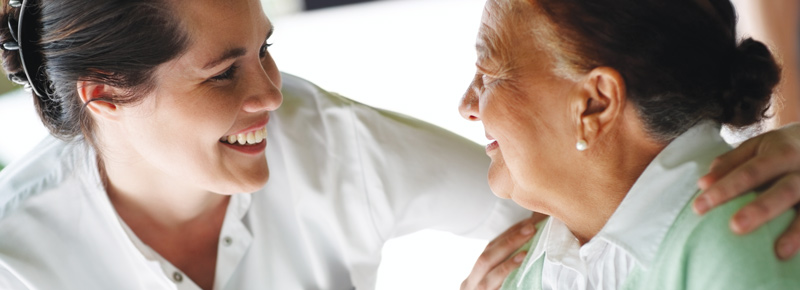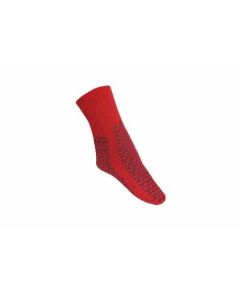Falls Prevention in Hospitals
Falls prevention can be deceptively difficult, and with the overwhelming amount of information out there, it can be hard to know where to start.
That’s why we have created this Falls Prevention Knowledge Base. Here, you will find practical tips and recommendations to help prevent falls in your hospital. For further reading, we have also included a list of trusted resources, with even more guidelines and tools that will empower you and your team to fight falls.
Due to the ageing population, the numbers of falls-related injuries are increasing. People aged 65 years and older are considered to be at the highest risk of falling. Statistically, one third of this population group will experience a fall on an annual basis.¹
While there are high costs for these patients, in terms of distress, pain and loss of independence, the direct economic impact related to falls can be astronomical for your facility.
According to the UK Government Guidance 'Falls: Applying All Our Health', the total cost of fragility fractures is estimated to be £4.4 billion, which included £1.1 billion for social care. Hip fractures account for around £2 billion of this sum.¹
£4.4 billion
20%
240,000


In extra costs associated with caring for patients who have fallen


Of hip fracture patients entered long-term care in the first year after a fracture
Falls in acute hospitals and mental health trusts in England and Wales


Reference
¹ UK Government Guidance – Falls: apply All Our Health https://www.gov.uk/government/publications/falls-applying-all-our-health/falls-applying-all-our-health
Healthcare professionals should assess and identify patients at risk of falls and evaluate the best options to help prevent falls.
Age
People 65 and older are considered to be at the highest risk of falling.¹ Around one third of this population will experience at least one fall per year at home, and about half will fall more frequently.
In individuals over the age of 75, falls are the most common cause of injury-related deaths in the UK.
Falls history
A patient’s falls history should be considered, particularly if they occurred within the last six months.
Previous falls are one of the most reliable factors to predict future falls.
Incontinence
Incontinence is also a key factor, especially if the person is relatively mobile and independent but experiences an urgent or frequent need to go to the bathroom. Frequent trips to the bathroom, particularly at night, often lead to falls.
Other factors, such as the use of urinary catheter supplies, can add to the risk of falling.
Patient care equipment
Another key factor is the presence of any patient care equipment limiting the patient to one location or restricting movement. This may include:
|
|
Mental stability
The risk of falling is increased if the person:
- Is emotionally impulsive
- Tends to be confused or disoriented
- Has had a stroke
- Is diagnosed with a condition such as Alzheimer's disease, Parkinson's disease or dementia.
Medications
All healthcare facilities should maintain a list of drugs that can contribute to falls, including:
|
|
Any patient who has recently been sedated should generally be considered at high risk of falling for 24 hours afterwards or until there is a return of a baseline level of consciousness.
Footwear
A significant number of older people fall every year because of footwear that does not fit very well or has become unsafe through wear and tear.
Patients should wear appropriately fitting footwear. Healthcare providers may consider slipper socks for patients with no or inappropriate footwear on admission. Slipper socks may also be the best option if the patient gets up in the night or is not cooperating with recommended footwear.
Mobility
Staff should check whether the patient requires walking assistance or a mobility device, such as a walker or cane.
In addition, the person's gait should be evaluated to see if it is lurching, swaying or unstable.
Visual or auditory impairments
Visual or auditory impairments may also affect movement and cause a lack of environmental awareness or that of the hazards within it.
References
¹ National Institute for Health and Care Excellence, Action needed to reduce hospital falls: a 'one size fits all' approach will not work, June 2013, Available at: http://www.nice.org.uk Accessed April, 2016
Healthcare facilities should assess and identify environments that could cause patients to fall. Every time you enter the room, be aware of factors that may make the environment unsafe (clutter, spills, cords or tubing).
Floors
- Floors should have non-glare and non-slip surfaces and be cleaned with non-slip wax.
- All patient rooms should have a clear path to the bathrooms.
- Floors should be free of clutter.
Lighting
- Light switches should be accessible before entering a room.
- Glare should be eliminated, including that from natural light coming in from the windows.
- Lighting in dangerous areas, such as stairways and hallways, should also be checked.
Stairs
- Handrails should be secure on both sides.
- Step surfaces should be non-slip and their edges should be indicated in some way (e.g. with a white stripe or reflective tape).
- Stairways should be free of any clutter or equipment.
Elevators
- The elevator floor should be level with the hallway.
- The surface should be slip resistant.
- The door should be wide enough for walkers and wheelchairs.
- The emergency stop button and phone should be clearly marked and easy to reach.
Patient beds
- Mattresses should be extra firm at the sides to allow for secure seating and easier transfers on and off the bed.
- Call buttons must be easily accessible.
- Beds should be properly configured based on the patient’s individual fall risk (consider the use of bed rails, bed height and the use of floor pads).
Patient rooms
- Evaluate the patient room’s furniture, including chairs and bedside tables.
- Avoid furniture with wheels.
- Ensure that chairs allow the patient to easily lower and lift himself or herself in and out of the chair.
Bathrooms
- Bathroom doors should be wide enough for walkers and wheelchairs.
- Bathroom floors should have non-slip mats or strips to help secure footing.
- Staff should consistently ensure that the floors are dry.
- Grab bars should be secure and logically positioned to assist someone entering the room, getting into or out of the bath or shower and rising from the toilet.
- Use elevated toilet seats when necessary for people with a risk of falling.
Once the person's risk of falling has been identified, it is important to educate the patient and his or her family about the risks and how to reduce their occurrence.
Interventions and proper communication with patients or residents and family members may decrease the risk of falls. Explain to them why they are at risk of falling and what your facility is doing to keep them safe.


Educate the patient
Explain risk factors to the patients and provide any specific information they may need, such as:
- Being aware of dizziness due to medications, illness or weakness following a procedure
- Remaining in bed and using the call button to ask for assistance before getting out of bed, such as when they need to use the bathroom
- Wearing appropriate footwear or shoes when walking to help ensure a more secure grip on the floor
- Sitting upright on the edge of the bed for 10 seconds before standing
- Never trying to support themselves on rolling equipment such as an IV pole
- Using side rails and any other protective devices when walking
- Calling the nurse for assistance if they need an adjustment, and not doing it on their own.


Educate the family
Discuss the plan of care based on the patient's risk of falling with the family members:
- Educate them about the risk of injury from a fall.
- Share what they can do to help decrease falls while the patient is in your facility.
- Try to empower the patient and family members with resources and support.
- Inform them that someone will be checking frequently on any needs that they may have.
If a fall occurs, always communicate this with the family and notify them of any suspected or confirmed injuries. This will help create a level of respect between the facility’s staff and the family. It is key to reassure the patient and family that you are taking care of them.
You can also convey a couple of key points during each visit for them to understand the risk of falling and safety precautions. You should be able to clarify any concerns and answer any questions they may raise.
A successful falls prevention programme must include system-wide, individual rules, and staff must clearly understand their responsibilities. Educating and engaging the team will help build a culture of responsibility and safety within the organisation.
It is important to provide the staff with falls prevention tools in order to increase awareness and reduce falls in the facility. Educational materials on falls prevention should be a part of new employees' orientation and yearly continuing education for all staff.
Educate your team on a regular basis in order to create an environment where the patient’s quality of life is of utmost importance.
Engage the team
- Help staff identify high-risk areas for falls.
- Implement trainings and learning activities for the staff.
- Ensure that the topic of falls prevention is routinely on the staff meeting agenda (share data, ask for recommendations to improve the programme).
Falls prevention tools
Teach the staff about tools that are specific to the falls prevention programme for your facility, for instance:
- Debriefing tool or investigation tool: used for interviewing staff that may have been present when the fall occurred. It gathers data that can be used for future educational needs of the team and staff in general.
- Comfort rounds/rounding tools: when patients are checked frequently, the needs of the patients are better met. Hourly rounding is essential to help prevent falls.
- Dashboard tool: used to help track the facility’s past and present falls. It helps the team implement, plan and improve care for the future.
- Bed alarm: used to alert staff of significant movements in the bed that could lead to a fall.
- Anti-slip socks: used to provide grip to the patient when they get out of bed or walk around.
Debriefing
Once a fall has occurred, the nurse should:
- Interview the patient as soon as possible.
- Evaluate the patient’s clinical condition and risk factors.
- Investigate possible environmental factors that may have contributed to the fall.
- Assess equipment.
- Define/implement interventions consistent with patient goals/standard of practice.
- Interview staff.
- Document the fall.
- Monitor/evaluate the impact of the interventions.
- Revise interventions.
Implement a visual cueing protocol
Preventing falls is everyone’s responsibility, but how can your staff participate in the fight against falls without knowing whom they should be looking out for?
Choose products in a bright colour, like yellow, to help caregivers quickly, yet discreetly, identify patients at a high risk for falls.
Through visual cueing, any member of the staff can play an important role in reducing the number of patient falls.
As yellow is the most commonly used colour for identifying high-risk patients, Medline has developed an exclusive range of yellow falls prevention products to help you easily introduce visual cueing at your hospital.
Useful Falls Prevention Resources
NHS Improvement – Patient falls improvement collaborative:
Royal College of Physicians:
NICE clinical guidelines:
- Falls: Assessment and Prevention of Falls in Older People
- Falls in Older People
- Falls Prevention Exercise and Education Programme
European Hospital and Healthcare Federation (HOPE):
World Health Organization (WHO):
Cochrane Evidence Library
Related Products




